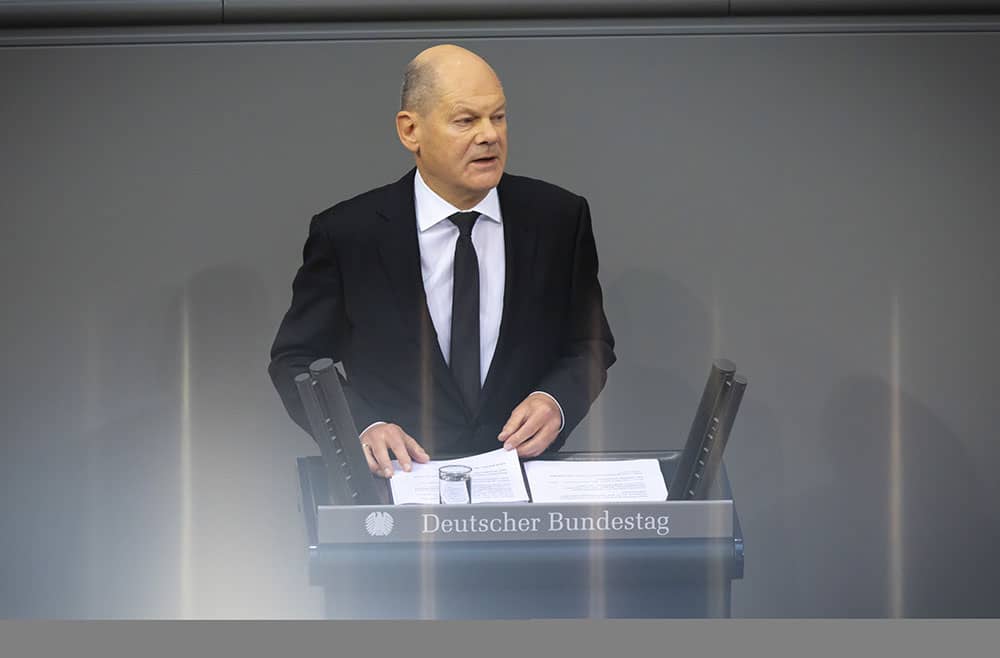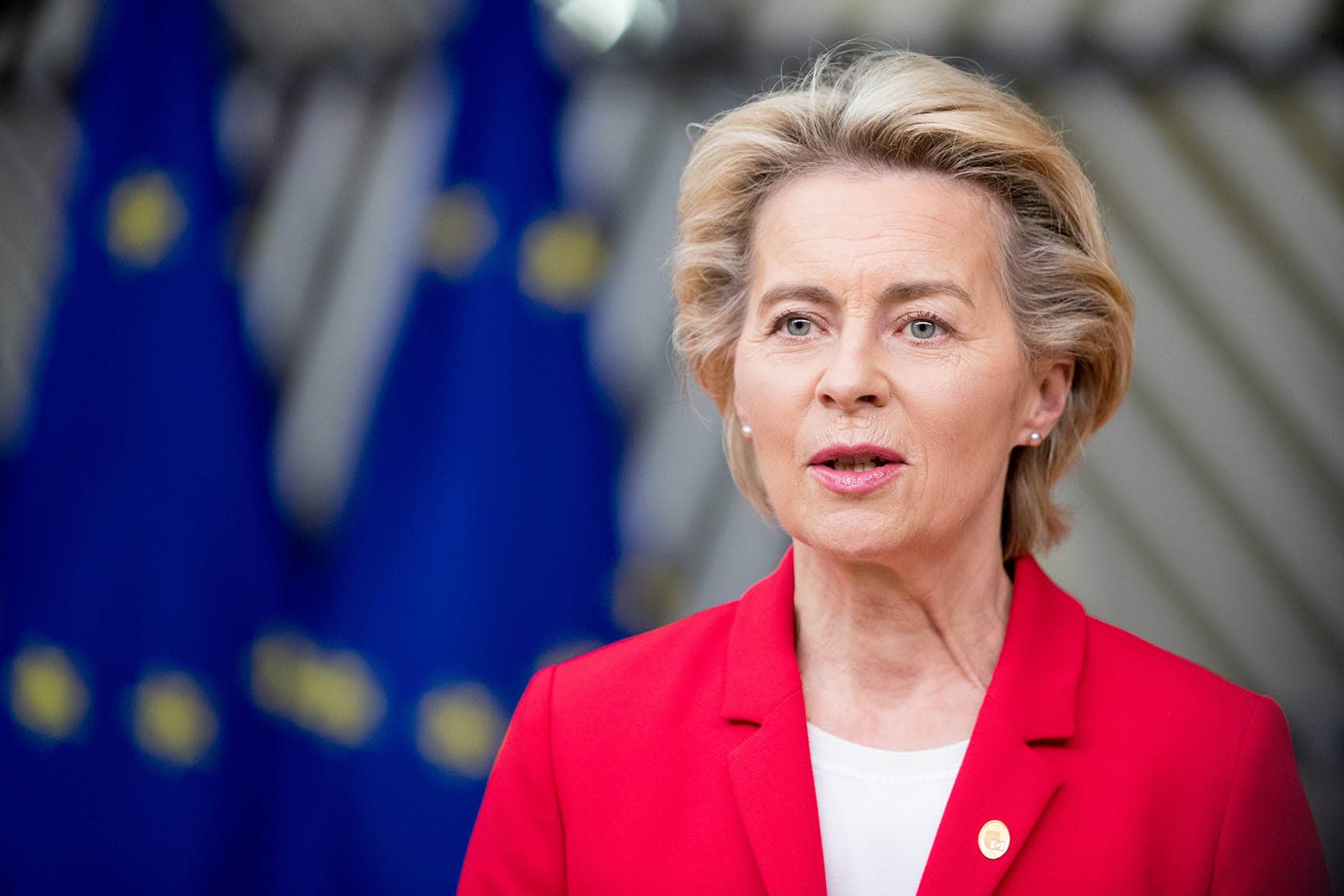HSBC Jacks Up Euro-Dollar Forecasts
- Written by: Gary Howes

Above: Germany's political parties agree to radically shift spending plans. File image of Olaf Scholz (SPD), Federal Chancellor. Reichstag building, plenary hall, Berlin / Germany. Image Thomas Imo / photothek for Bundestag.de.
HSBC’s updated EUR/USD projections reflect a major revision to its previous estimates
HSBC has revised higher its euro-dollar forecasts, citing political shifts in Germany and waning U.S. economic momentum, though the bank remains cautious about the sustainability of the euro’s gains.
The bank now sees the Euro-to-Dollar ending 2025 at 1.04, up from a previous forecast of 0.99, reflecting improved sentiment toward the eurozone following fiscal policy changes in Berlin.
Based on interest rate differentials, the bank expects the currency pair to hover between 1.08 and 1.11 in the near term.
"Having had a pessimistic view on EUR-USD since September 2023, we need to recalibrate in response to the German election result and fiscal change," HSBC said in a research note on Tuesday.
However, HSBC warned that the euro’s upside potential depends on how Germany’s new coalition government implements its expansionary fiscal policy. "In the coming weeks, there will be an ongoing assessment on how Germany’s coalition government implements its new fiscal plan and whether the real economy could benefit."
USD Fatigue Sets In
The revisions also stem from growing doubts about the U.S. dollar’s resilience. HSBC noted that U.S. economic uncertainty, weaker Treasury yields, and shifting investor sentiment have led to a reassessment of the greenback’s trajectory.
“The backdrop of significant U.S. policy uncertainty has shifted from being a source of expected USD strength, to one of fatigue and, more recently, a negative driver,” the bank said.
HSBC, however, does not see a major USD collapse but rather a correction from what it called an “overexuberant state.”
“The US exceptionalism narrative that served the USD well is being questioned,” the bank added.
At the start of the year, markets had anticipated swift tariff implementation by the U.S. administration, which contributed to dollar strength. “However, that gap has disappeared,” HSBC noted, explaining that concerns over U.S. growth and monetary policy now weigh on the currency instead.
Still, the bank believes the dollar could recover some of its losses in the coming quarters as trade tensions intensify. “The central case is that the USD will recover some lost ground, as US tariffs rise, the Fed does not cut more than what is already priced, and the rest of the world begins to look less exceptional again.”
Trade Tensions Loom Over Euro’s Gains

Above: Ursula von der Leyen announced retaliatory tariffs on the U.S. on Wednesday March 12. Photographer: Etienne Ansotte, Image © European Union, 2020. Source: EC - Audiovisual Services.
Despite the upward revision to EUR/USD forecasts, HSBC remains cautious about the long-term outlook, noting that trade conflicts could still tip the balance in the dollar’s favour.
“If the US imposes tariffs on imports from the EU, it would damage regional and global growth, especially if the bloc retaliates. We think this will shift EUR-USD lower gradually over the coming quarters,” HSBC said.
The EU and U.S. officially entered a trade war on March 12 as the European Commission announced it was to retaliate against U.S. tariffs, announcing tariffs worth $28BN on U.S. goods.
The EU said it is a countermeasure for the €26BN tariff announced by the U.S. last month.
The rump of the EU's package is nothing new: Tariffs imposed under Trump's first presidency were suspended during the Biden administration. The EU will let that suspension lapse in April.
However, an additional package of new countermeasures on U.S. exports will come into force by mid-April, following consultation with Member States and stakeholders.
HSBC sees a delicate balancing act for the euro in the months ahead. “Longer-term interest rate differentials suggest there is room for EUR-USD to rise further towards 1.11. However, when looking at a shorter yield differential with the exchange rate, EUR-USD should be close to 1.08, all things being equal,” the bank concluded.
Forecast Adjustments
HSBC’s updated EUR/USD projections reflect a major revision to its previous estimates:
With the dollar’s strength being reassessed and Germany’s fiscal policy in flux, HSBC’s revisions underscore the uncertainty in global FX markets as political and economic narratives shift.





